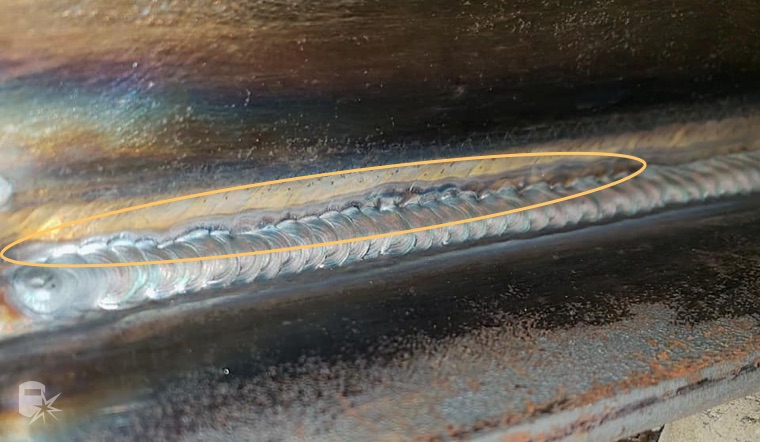Understanding the Causes and Solutions for Undercut Welding in Metal Fabrication Processes
In the realm of steel manufacture procedures, the event of undercut welding poses a considerable difficulty that requires a comprehensive understanding of its reasons and sensible solutions. The complex interaction of different elements during welding procedures can lead to this unwanted phenomenon, influencing the structural stability and general high quality of the welded joints - Preventing weld undercut. By dissecting the origin of undercut welding and checking out effective remedial steps, fabricators can boost the standard of their workmanship and ensure the production of remarkable steel elements
Usual Sources Of Undercut Welding
Frequently forgotten in metal fabrication, undercut welding happens due to various factors that require thorough interest and know-how to be efficiently reduced. Furthermore, improper welding strategies, such as utilizing the wrong welding angle or travel speed, can also contribute to undercut development. The option of welding specifications, such as voltage, present, and wire feed speed, plays a considerable role in the occurrence of undercut welding.
Influence of Incorrect Welding Parameters
Unreliable welding parameters can considerably jeopardize the stability and high quality of bonded joints in metal construction processes. The impact of incorrect welding criteria manifests in various means, bring about architectural weaknesses and flaws in the bonded components. One crucial aspect impacted by incorrect welding specifications is the infiltration deepness of the weld. Insufficient warm input because of reduced welding currents or excessively high traveling speeds can result in insufficient blend in between the base metals, bring about incomplete joint infiltration and weakened bonds. On the other hand, excessive warmth input brought on by high welding currents or sluggish travel rates can result in extreme and burn-through reinforcement, creating a weak and unpredictable weld structure. Additionally, incorrect specifications such as incorrect voltage settings or inaccurate electrode angles can contribute to erratic weld bead accounts, lack of combination, and enhanced chances of issues like undercutting. Meticulous interest to welding criteria is critical to make sure the production of high-grade welds with the preferred mechanical buildings and structural integrity.
Result of Improper Torch Angle
Improper torch angle in welding operations can considerably influence the quality and stability of the final weld joints in metal construction procedures. Damaging is a common welding defect where a groove forms along the weld toe, compromising the joint and endangering its structural integrity.
A lantern angle that is also high can cause insufficient penetration, incomplete combination, and raised spatter. On the various other hand, a torch angle that is too superficial can cause too much penetration, burn-through, and distortion of the base material. Preventing weld undercut. Appropriate lantern his response angle is vital for ensuring constant weld top quality, strength, and appearance
To avoid damaging and various other flaws triggered by incorrect lantern angles, welders must be trained to maintain the correct lantern angle throughout the welding process. Routine monitoring and modification of lantern angles throughout welding can help achieve sound welds with minimal flaws.
Role of Inadequate Welding Techniques

An additional facet of insufficient welding methods is incorrect weld prep work. Poor cleaning of the base steels, incorrect joint design, or insufficient side preparation can all contribute to undercut welding. Insufficient securing gas protection or using the wrong type of gas can result in incomplete combination and the development of undercut issues.
To deal with the function of insufficient welding methods in metal construction processes, it is vital to offer detailed training for welders. Proper education on welding criteria, joint prep work, and protecting gas choice can aid avoid undercut welding and guarantee high-grade welds in metal construction projects.
Reliable Solutions for Undercut Welding
Dealing with undercut welding in metal manufacture needs carrying out effective remedies to improve weld top quality and structural integrity. One of the primary solutions to fight undercut is to adjust welding specifications such as voltage, present, and travel speed to guarantee appropriate warmth input and fusion. By fine-tuning these setups, welders can protect against extreme melting of the base metal and filler product, reducing the likelihood of undercut development.
Furthermore, proper joint prep work is critical in preventing undercut. Making sure tidy base steel surface areas without impurities and utilizing the ideal bevel angle can help advertise much better weld infiltration and minimize the risk of undercut - Preventing weld undercut. Employing appropriate welding methods, such as oscillating the torch or weaving, can likewise assist in distributing warmth evenly and filling up the weld joint sufficiently, minimizing the possibility of undercut flaws
Additionally, choosing the proper welding consumables, including electrodes and filler metals, is crucial in alleviating undercut. Using materials see this here with ideal chemical structures and mechanical properties can add to achieving audio welds with minimal undercut. Regular evaluation and quality assurance procedures need to additionally be implemented to discover and deal with undercut problems promptly, guaranteeing the total integrity of fabricated steel components.

Verdict
Finally, recognizing the causes and remedies for undercut welding in steel manufacture processes is critical for achieving top quality welds. By attending to common reasons such as incorrect welding specifications, inappropriate lantern angle, and inadequate welding techniques, welders can prevent undercutting and make certain solid, resilient welds. It is important to pay interest to these elements and execute efficient options to enhance the total you can find out more welding process and end product quality.

Comments on “Exactly How to Prevent Weld Undercut: Vital Tips for Welders”